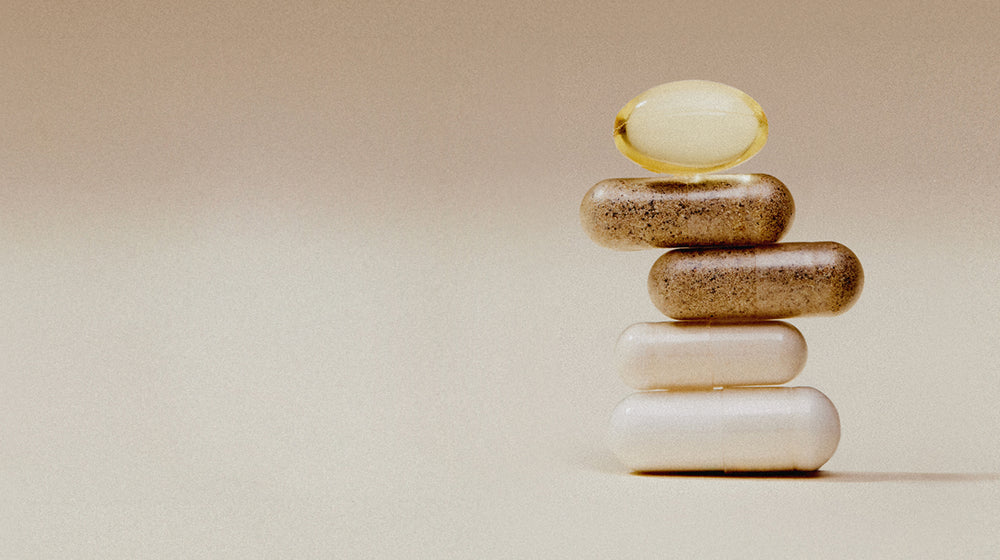Giving birth is a transformative experience, on infinite levels—and that (of course) includes the drastic impact on our bodies. Hormonal fluctuations, the expansion of the uterus, and the change of nearly every system within the body demonstrate just how resilient we are and how life-altering motherhood can, is, and will be.
The surge of chemicals in the brain that aid in bonding with the baby, a heightened sense of hearing and smell…while every birthing and postpartum experience is unique, there are so many reminders that the body instinctively knows how to nurture new life. This period is part of what’s known as “matrescence”, a term coined in the 1970s—which describes the physical, emotional, hormonal, and social transition of becoming a mother.
The process itself highlights the strength and endurance of the human body. And the body after giving birth? Almost superhuman. While some of the changes mothers experience are temporary, they’re extremely interesting nonetheless.
Here, 7 fascinating facts about the postpartum body you may not have known.
$41.14
First 3 Mo
First 3 Months
$38.67
First 3 Mo
First 3 Months
$27.14
First 3 Mo
First 3 Months
Shop the Article:


Mom Multi Support Pack
Shop Now


Cellular Hydration Powder
Shop Now


Sleep Support*
Shop Now
1. A postpartum body has heightened senses, particularly smell and hearing
Talk about superhuman: After giving birth, you can expect that your senses will be heightened, particularly when it comes to the sense of smell and hearing.
This heightened sense of smell can be explained two-fold. For one, studies show that moms can identify their baby’s smell within days of giving birth (fun fact: newborns can identify mom, too!), which promotes bonding.1 Two, a mother’s heightened sense of smell has been linked to possibly help in identifying environmental threats to their baby.2
Some mothers experience increased sensitivity to sound when they're postpartum, possibly due to hormonal changes or heightened awareness while caring for their newborns.3
2. Your feet change, of all things
Through pregnancy and postpartum, your feet can change—and it’s very likely that they’ll get bigger. In fact, nearly 60 to 70 percent of women experience having longer and wider feet after pregnancy.4 This is actually more likely to be permanent than other postpartum changes. Why the increase? The extra weight sustained during your pregnancy alongside the hormonal fluctuations that relax ligaments in preparation for childbirth both have an effect. You’ll most likely see this effect more drastically after your first child.
3. You might be more flexible
Speaking of relaxing ligaments, the body releases relaxin (so appropriately named), which is a hormone that, well, relaxes your ligaments, joints, and muscles to prepare for birth. This change can hold postpartum, which means many women find they’re actually more flexible following childbirth. (It can also mean joint pain, for the exact same reason.)5
4. You could have more stamina postpartum
While many feel fatigue after childbirth (postpartum fatigue is very much real, and very common), your aerobic capacity post-birth can often be much higher than usual. In fact, it can increase up to 20% in the first six weeks postpartum.6 This means that some will not only have the capacity for aerobic movements, but will feel a surge of energy to do so.
5. Postpartum hair loss is real
Hormones have an affect on everything in the body, and that includes hair. Postpartum hair loss can range from pretty non-existent to drastic. It starts about two to four months after giving birth, and typically lasts from six months to a year. (And yes, 90 percent of those who have given birth experience it.)7 Women can expect to shed between 100 and 200 hairs a day.
6. You’ll get the tingles
Your body is still adjusting to the hormonal changes post-birth, and this can give you the tingles (literally). Your hands and feet can often experience a tingling sensation, which usually goes away on its own. (Though some report Carpal Tunnel Syndrome8, CTS, and/or Restless Legs Syndrome9, RLS, following birth.)
7. If you're breastfeeding, you'll notice some fascinating changes, too.
While everyone's feeding journey is different (and valid), those who breastfeed might notice certain instincts kick into gear even before they feed for the first time: During the "golden hour" after giving birth, you might notice that baby starts to army crawl up your torso towards your breast—in search of a nipple to latch onto.
During those first few days postpartum, your milk will take the form of colostrum, also known as "liquid gold"—a nutrient-packed jelly that's great for baby's microbiome.
Next up: Everything you want to know about the women's health research gap, plus other postpartum stats.
Sign up to receive doctor-backed, stage-specific content in your inbox each week.
theFolio in Your Inbox
References:
2. New Mothers Protected From Stress, Have Heightened Reward, Smell, Science Daily
3. Postpartum Gray Matter Changes in the Auditory Cortex, NIH
4. Pregnancy Leads to Lasting Changes in Foot Structure, NIH
5. The effect of relaxin on the musculoskeletal system, NIH
8. Management of “De Novo” Carpal Tunnel Syndrome in Pregnancy: A Narrative Review, NIH
This article is for informational purposes only. It is not, nor is it intended to be, a substitute for professional medical advice, diagnosis, or treatment and we recommend that you always consult with your healthcare provider. To the extent that this article features the advice of physicians or medical practitioners, the views expressed are the views of the cited expert and do not necessarily represent the views of Perelel.



















